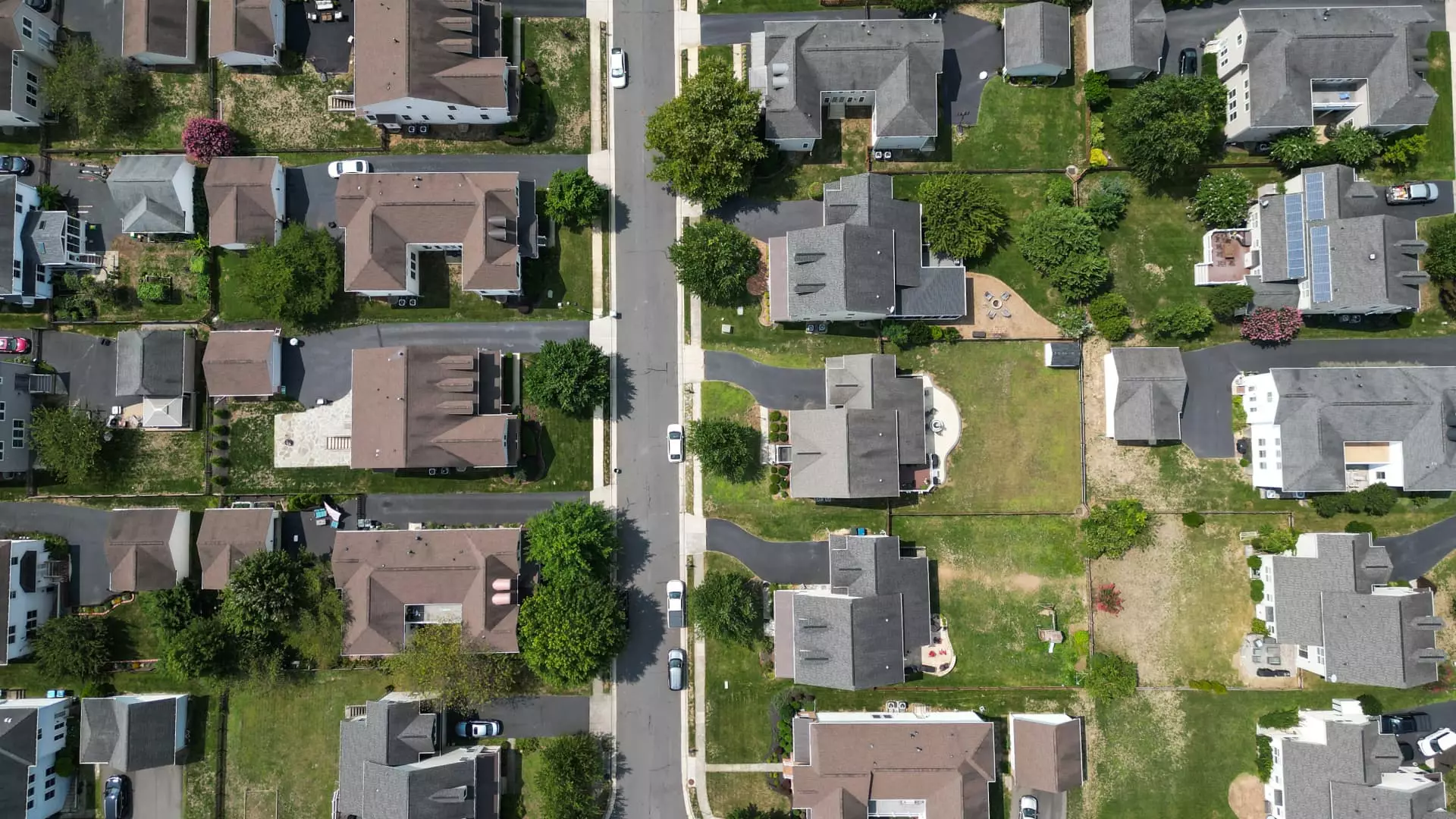Despite recent increases in mortgage rates, overall application activity has remained relatively unchanged, revealing a troubling disconnect between market conditions and homeownership aspirations. While a modest 0.8% uptick might suggest slight resilience, the reality is that prospective buyers and investors are rethinking their strategy in the face of rising costs. The fact that demand for home purchase loans remains only marginally higher than the previous year signals a troubling trend: consumers are growing increasingly hesitant, not due to lack of demand but because the financial barriers have become more prohibitive. This inertia hints at a broader issue—potential buyers perceive the current mortgage environment as either too risky or too costly, curbing their enthusiasm regardless of market stability.
The Illusion of Rate Stability
Although mortgage rates have only modestly increased to around 6.84%, this small change masks a far more significant underlying problem: affordability. For decades, a 6-7% rate would have been a typical purchase point, but in today’s economic climate, it’s a barrier most middle-class Americans are reluctant to cross. The persistent rate elevation is disproportionate to the actual economic fundamentals, artificially suppressing activity. Such a scenario is dangerous: it hampers the housing market from reaching its full potential and risks stagnating a vital sector that fuels broader economic growth. The idea that rates are still “manageable” overlooks the fact that many borrowers are sidelined, facing a financial pinch they are unwilling or unable to navigate.
The Flawed Assumption of Refinancing Resilience
While refinancing applications are down by 3%, this decline underscores a critical flaw in policymakers’ assumptions—that homeowners will continually refinance when rates drop. The percentage fluctuations downplay the deeper issue—the declining refinancing activity reflects a diminishing pool of eligible homeowners who stand to benefit from lower rates. Many existing mortgage holders are locked into high payments, or financial circumstances have deteriorated such that refinancing is no longer a viable tool to ease debt burdens. This pattern reveals a rigid housing finance system that fails to support those caught in the middle-income squeeze, exacerbating social inequality rather than alleviating it.
The Broader Economic Implications
The slight dip in mortgage rates early this week provided an illusion of fresh optimism, driven by political speculation rather than economic fundamentals. Markets tend to react impulsively to geopolitical rumors—like the potential early departure of Federal Reserve Chair Jerome Powell—yet these reactions are superficial. The core problem remains unresolved: bond yields and mortgage costs are driven by macroeconomic policies that prioritize inflation control over affordability. This misstep traps many potential homeowners in a cycle of frustration, unable to capitalize on even marginal improvements in borrowing costs. The broader economy suffers because a sluggish housing market hampers job creation and consumer confidence, yet policymakers seem content to ignore these systemic flaws.
The Reckoning That Lies Ahead
What the current mortgage landscape desperately needs is an honest critique—one that recognizes the fundamental flaws in our economic structure. Without addressing the root causes, including regulatory overreach, excessive interest rate hikes, and an overreliance on monetary policy, the housing market risks another prolonged downturn. It’s high time for policymakers to prioritize long-term stability and affordability over short-term rate manipulations that only serve to mask deeper economic vulnerabilities. Only through such a clear-eyed approach can we hope to unlock robust growth, expand homeownership, and restore confidence in a sector that still holds the potential to be a cornerstone of economic opportunity.

